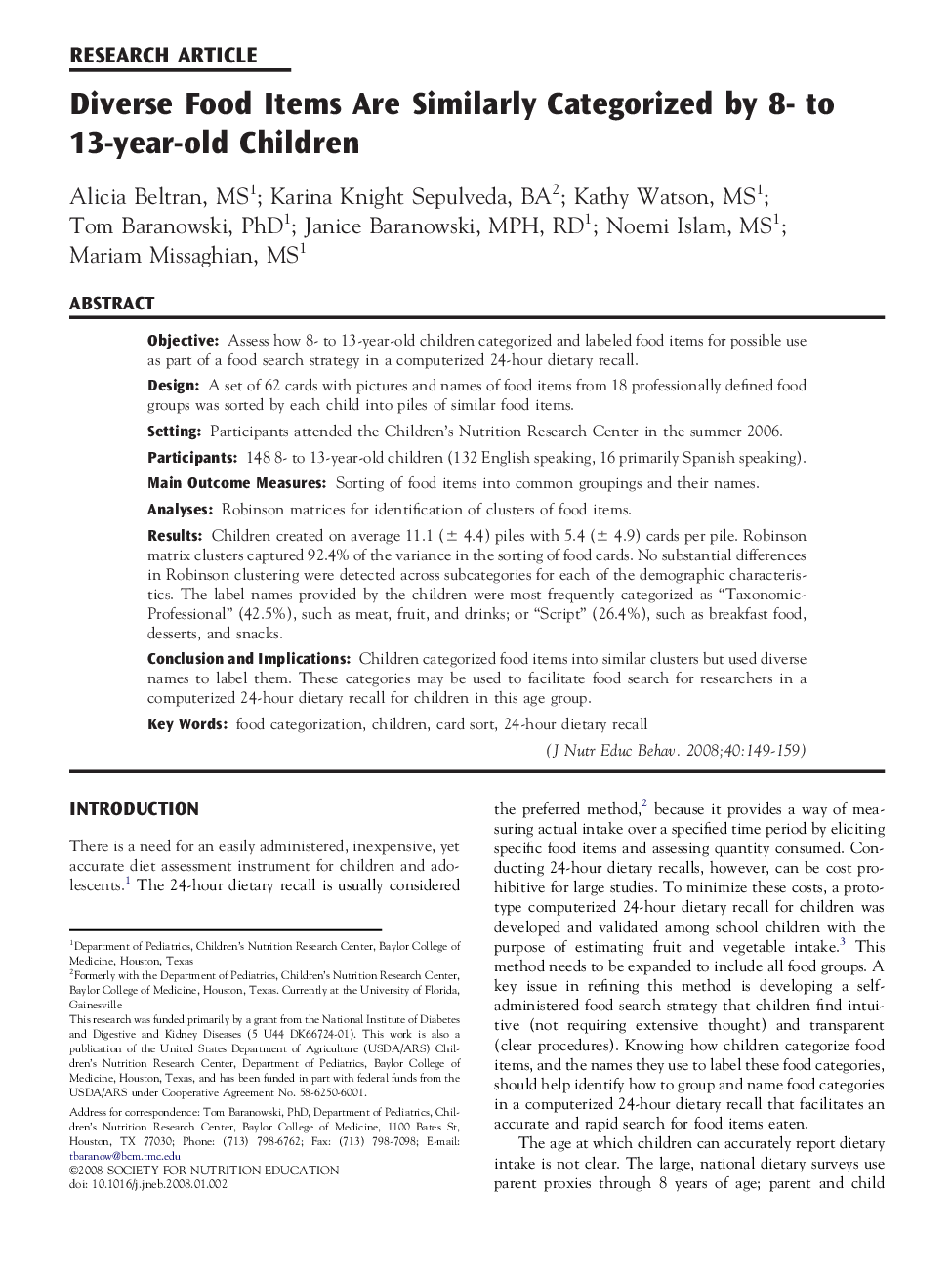| Article ID | Journal | Published Year | Pages | File Type |
|---|---|---|---|---|
| 362893 | Journal of Nutrition Education and Behavior | 2008 | 11 Pages |
ObjectiveAssess how 8- to 13-year-old children categorized and labeled food items for possible use as part of a food search strategy in a computerized 24-hour dietary recall.DesignA set of 62 cards with pictures and names of food items from 18 professionally defined food groups was sorted by each child into piles of similar food items.SettingParticipants attended the Children's Nutrition Research Center in the summer 2006.Participants148 8- to 13-year-old children (132 English speaking, 16 primarily Spanish speaking).Main Outcome MeasuresSorting of food items into common groupings and their names.AnalysesRobinson matrices for identification of clusters of food items.ResultsChildren created on average 11.1 (± 4.4) piles with 5.4 (± 4.9) cards per pile. Robinson matrix clusters captured 92.4% of the variance in the sorting of food cards. No substantial differences in Robinson clustering were detected across subcategories for each of the demographic characteristics. The label names provided by the children were most frequently categorized as “Taxonomic-Professional” (42.5%), such as meat, fruit, and drinks; or “Script” (26.4%), such as breakfast food, desserts, and snacks.Conclusion and ImplicationsChildren categorized food items into similar clusters but used diverse names to label them. These categories may be used to facilitate food search for researchers in a computerized 24-hour dietary recall for children in this age group.
